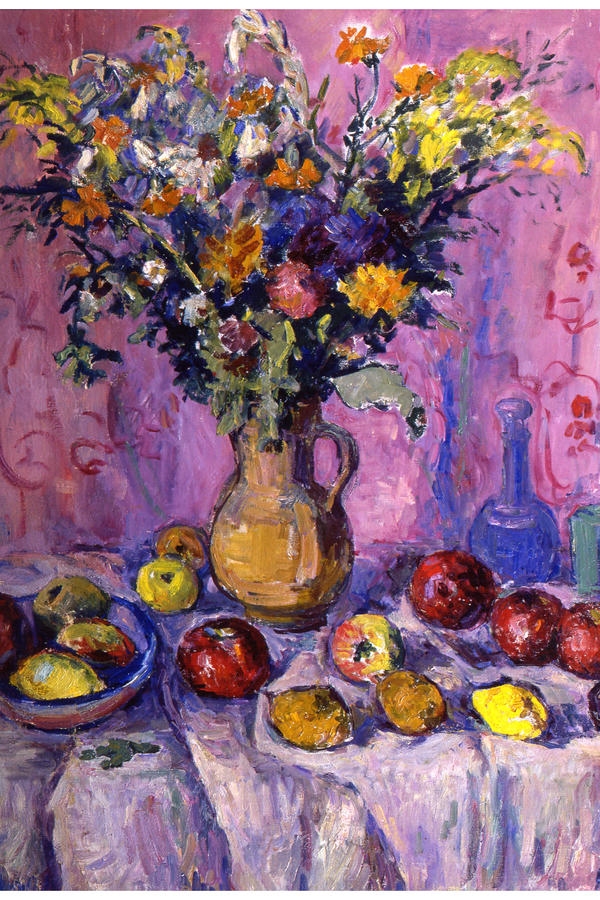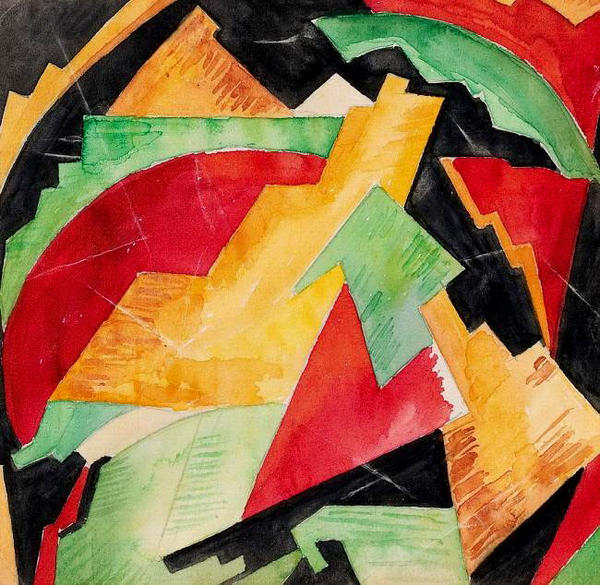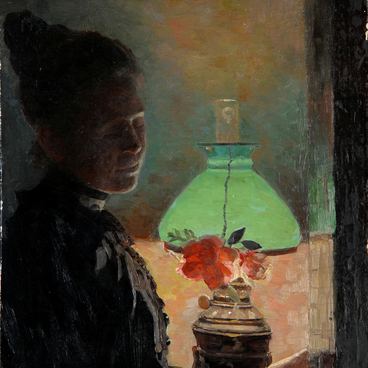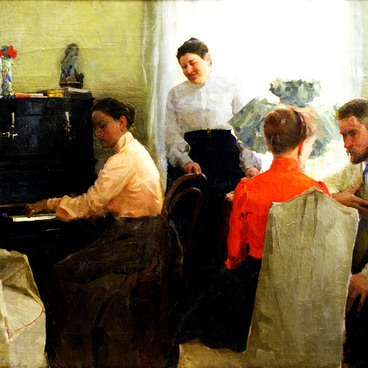Nadezhda Udaltsova was one of the first Russian avant-garde painters. Even in her later work, A still-life with flowers and fruit, 1939, which was created after all her radical experiments in painting, she retained features of modernist art. The strict centric composition is reminiscent of the avant-garde’s geometric quest, and the extremely bright, in places almost pure colours, hark back to her experimenting with cubism.
Udaltsova, neé Prudkovskaya, was born in Orel in 1885. From an early age her parents cultivated in her a love for painting. When the family moved to Moscow, Udaltsova attended a city school and a private arts school, but, as she recollected, the “outside restless world” only distracted the young painter from her art studies. In 1911, she began her studies at the Tower, a free art studio at the Lyubyanka square, where she met Mikhail Larionov, Natalia Goncharova, and Vladimir Tatlin. In 1912, she left for Paris and enrolled there in the Académie de la Palette, a European centre of the cubist art.
Udaltsova, neé Prudkovskaya, was born in Orel in 1885. From an early age her parents cultivated in her a love for painting. When the family moved to Moscow, Udaltsova attended a city school and a private arts school, but, as she recollected, the “outside restless world” only distracted the young painter from her art studies. In 1911, she began her studies at the Tower, a free art studio at the Lyubyanka square, where she met Mikhail Larionov, Natalia Goncharova, and Vladimir Tatlin. In 1912, she left for Paris and enrolled there in the Académie de la Palette, a European centre of the cubist art.




